If you’re like me, the thought of full-time RV living is pretty exciting. Waking up next to a lake or out in the desert, traveling at your own pace, and enjoying a simpler way of life sounds awesome. But before jumping in, it’s super important to get clear on the real expenses involved.
There’s more to it than just buying the RV and filling up the gas tank. Here, I’m breaking down what it actually costs to live on the road, and sharing tips that help with budgeting for a full-time RV lifestyle.
Starting Costs for Full-Time RV Living
Getting set up for life on the road takes a decent chunk of cash up front. The biggest cost is the RV itself. You’ll see options all over the place; used travel trailers can start around $10,000, while new Class A motorhomes can easily run over $150,000. A lot of folks, myself included, start with something used to save money and learn what works for them.
Beyond the RV, you’ll want to budget for registration, taxes, and insurance. Some states charge a lot more for registration and sales tax on RVs. First-time insurance fees for RVers can feel steep, especially if you go full-time, but shopping around pays off.
Other startup costs include upgrading things in the RV, adding solar, a signal booster, or maybe a better mattress. I also had to set aside money for kitchen supplies, bedding, and storage bins that keep things from banging around while driving.
Before I ever hit the road full-time, my initial setup cost about $133,000. That covered a solid used travel trailer, a capable truck, and the little things that make daily life more comfortable. Your costs will depend on the type of RV, where you buy it, and how much work you plan to do yourself.
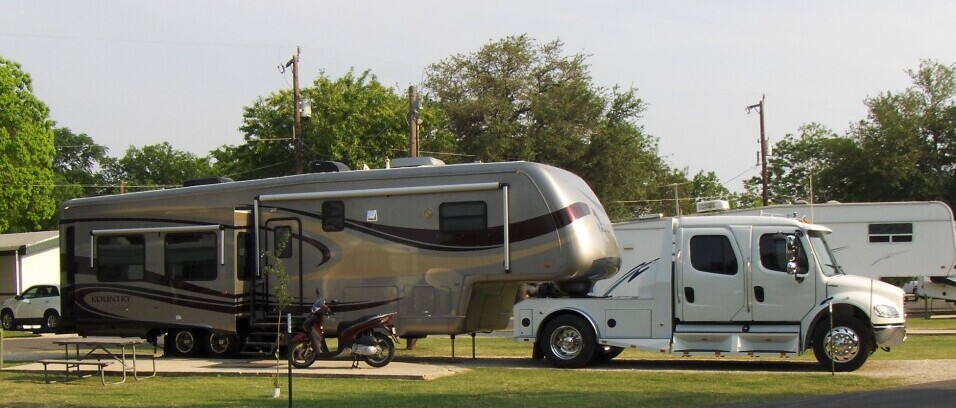
Don’t forget to think about registration and insurance fees that vary greatly from state to state; it pays off to check your local DMV and insurance websites, which sometimes have helpful cost calculators and FAQs. I strongly recommend giving these a look so your initial costs don’t surprise you.
Monthly Living Expenses On the Road
Once you’re set up, your monthly costs become the main thing to manage. Unlike a regular house, RV-related expenses can swing up and down a lot each month. Here’s how my usual monthly budget breaks down:
- Campgrounds + Parking: Staying in RV parks, state parks, or private campgrounds usually costs $25–$90 a night, depending on hookups and location. If you chase warm weather all year, expect to pay higher rates during busy seasons.
- Fuel: Gas or diesel is a huge chunk, especially with a bigger rig. Prices go up fast if you move often. I plan extra for summer, when I’m covering more miles, usually averaging $300 to $700 per month. I typically put thirty gallons in my Chevy 2500 HD diesel. Using the EFS fuel card, I can save thirty to ninety cents a gallon. That will get me 375 miles down the road.
- Groceries + Eating Out: I spend about the same amount living on the road as I did with a sticks-and-bricks home.
- Maintenance: Set aside $100–$300 every month for repairs or upkeep. RVs take some regular TLC, whether it’s changing oil, fixing leaks, or replacing parts.
- Insurance: Full-timer insurance is different than basic RV insurance, covering both your rig and personal stuff. It runs $100–$180 monthly, depending on the policy and the RV.
- Cell + Internet: Staying connected is huge for me. I pay $225 for phones, mobile internet, and Starlink.
- Propane + Utilities: Propane for heating and cooking averages $10–$25 monthly. Some campgrounds charge for electricity on top of your nightly fee. If you are staying in colder climates, these costs will rise.
All in, I typically budget $1,500 to $3,000 a month for full-time RV living, depending on the season, travel habits, and where I park. Boondocking (camping for free on public land) helps save money, but I still like mixing it up with paid spots now and then.
For some, doing laundry on the road is another cost that pops up; most campgrounds charge $2–$4 per load, while laundromats in some towns can be a bit more expensive than back home.
How Travel Style Impacts RV Living Costs
The way you travel has a big effect on your monthly spending. Stationary RVers, those who stay put for a month or more, save a lot on fuel and sometimes get better rates at campgrounds. Some parks offer big discounts for monthlong stays, bringing nightly costs way down.
Jumping from park to park every few days will push your gas and campground bills up. I tried both, and found a mix works best: longer stays where I really want to explore, then short hops when I want to cover ground.
Your rig size matters too. Bigger RVs use more fuel and usually cost more in maintenance, insurance, and repairs. Travel trailers and smaller campers sip less gas and can fit into cheaper campsites or boondocking locations. Remember, some remote or scenic campsites only fit smaller rigs, so having a compact setup sometimes gets you to those hidden gems.
For those who want to save, boondocking is a great option. It’s usually free, but you’ll need to be self-sufficient with things like solar or extra water tanks. When I plan ahead and stock up, I can camp for free for weeks at a time, paying only for groceries and the occasional dump station.
If you’re curious, there are online tools like Campendium, iOverlander, and RV Parky that can help you track down free sites and check out reviews from other RVers. These apps give a good sense of what amenities each spot has.
Hidden and Seasonal Expenses to Watch Out For
RV living comes with hidden expenses I did not expect in the beginning. Here are a few that have caught me (and other RVers I’ve met) off guard:
- Repairs (Big or Small): Something always needs fixing, from leaky pipes to broken appliances. Budgeting for both little parts and larger breakdowns is really important.
- Roadside Assistance: Services like Good Sam or CoachNet run $80–$120 a year, but come in handy. Tows and tire changes on big rigs are pricey if you pay out of pocket.
- Off-Season Costs: In cold weather, you may need to invest in extra insulation or heaters. In the summer, air conditioning bumps up electric use. Some places even shut down during winter, pushing you to more expensive RV resorts in southern states.
- Registration and Taxes: Renewing registration and paying property tax on an RV can get expensive, depending on where your rig is registered.
- Storage Fees: If you want to park your RV for part of the year or store extra stuff, expect monthly storage fees too.
Learning to expect and plan for these expenses keeps the lifestyle from getting stressful. I keep a separate “unexpected” fund, just in case. It helped a lot last year when my water heater died without warning.
Also, never underestimate the little things, like replacing worn-out hoses, small tools, or camp chairs. Those small replacements start to add up faster than you’d expect. For those traveling with pets, there will be additional costs for vet visits, food, and pet-friendly sites—plan accordingly.
Ways to Save and Stretch Your RV Living Budget
There are lots of tricks to making full-time RV life more affordable. Here are some favorites I use all the time:
- Boondock More: Public lands like Bureau of Land Management (BLM) sites or national forests have free camping for days, even weeks. With solar power and good water storage, you can last a long time off-grid.
- Discount Programs: Campground memberships such as Passport America, Thousand Trails, or KOA can slice your cost per night. I watch for campground deals and seasonal specials to save even more.
- Meal Prep: Cooking at home cuts down food costs a lot. I keep a small pantry stocked with dry goods to avoid expensive last minute runs to pricey stores.
- DIY Repairs: I watch YouTube tutorials and learn from RV forums. Handling smaller fixes myself means avoiding expensive shop bills.
- Travel Slowly: Fewer miles means spending less on fuel. I plan travel routes around the most affordable places to stay, and map out grocery stores in advance to avoid getting stuck where things are costly.
If you plan ahead and stay flexible, you can keep costs manageable without sacrificing fun or comfort. Tracking every dollar for the first few months helps figure out what areas need adjusting. Over time, you find your groove and the costs settle down.
For those looking for work on the road, picking up seasonal gigs at national parks, campgrounds, or local businesses can give a big boost to your travel fund. Even a part-time remote job or freelancing keeps the wheels turning with peace of mind.
Extra Considerations: Health, Mail, and Connectivity
Full-time RV living isn’t just about campsites and fuel. Staying healthy, getting mail, and staying online are all part of the experience. Here’s what works for me:
- Healthcare: Health insurance on the road varies widely depending on age and existing conditions. Some folks stick with big nationwide plans, others use telehealth services or “health share” programs. I set aside extra each month for out-of-pocket bills, just to be safe. It’s worth calling your provider in advance and asking how coverage works across state lines. Pharmacies in different regions can sometimes have price swings, so a little research ahead saves headaches later.
- Mail Service: Since you won’t have a traditional address, consider a mail forwarding service. Companies like Escapees or Good Sam send your mail to wherever you are, sometimes scanning it so you can check it online. Some services even offer to deposit checks, which is handy if your income relies on paper payments. Through Passport America, we have used their mail service since 2010 and find it invaluable!
- Connectivity: Working remote or keeping up with family makes reliable internet really important. I use a mix of mobile hotspots and campground WiFi, and I always have backup plans in case I lose signal. Upgrading to unlimited cell data was one of my best moves, especially in rural areas. Don’t forget to check cell coverage maps before heading to a new destination, and keep a cheap backup SIM card for emergencies.
These extra expenses usually add up to $100–$200 a month, depending on your needs and setup. They’re definitely worth budgeting for so you stay connected and healthy while traveling. For international RV travelers or those exploring Canada and Mexico, be sure to check cell service and health insurance options for each region, as there are significant differences in coverage and costs.
Frequently Asked Questions
Here are some common questions I get about the costs of full-time RV living:
How much money do I need to start full-time RV living?
Startup costs typically range between $20,000 and $150,000 or more, depending on the type of RV, whether it’s new or used, and any upgrades. Smaller rigs and used campers cost less to set up.
Is it cheaper to live in an RV full-time than in ,a house?
It depends. Some save a lot by downsizing, cooking at home, and avoiding expensive campgrounds. Others spend more during busy seasons or if things break often. Careful tracking gives the best answer for your situation.
What are the biggest monthly expenses for full-time RVers?
The most common costs are campground fees, fuel, groceries, insurance, cell/Internet, and maintenance. You can save a lot by camping for free, traveling less, and learning to do minor repairs yourself.
What’s the best way to save money as a full-time RVer?
Travel slowly, boondock when you can, use campground memberships, and stick to a budget. Simple living and smart planning usually help keep RV life affordable. If you have skills that translate to online work, look into remote job boards that cater to nomads—you might be surprised how many options there are these days.
Resources and Final Thoughts
Breaking down the real costs of full-time RV living takes careful planning and a willingness to adapt. Tracking spending, budgeting for repairs, and being open to boondocking can keep things fun and affordable. After years on the road, I’ve found that it’s possible to live comfortably without breaking the bank; it just takes a bit of practice and flexibility.
For more details or tools that help with planning and budgeting, check out online forums, RV budgeting apps, or groups like Escapees and Full-Time Families. These resources are filled with real-world stories and up-to-date ideas about how to cut costs, solve problems, and make the most of RV life.
Many experienced RVers regularly post their monthly budgets online, and you can find printable planners to track your expenses. If you’d like to dig into specifics or need recommendations, there are also podcasts and YouTube channels focused on every aspect of full-time RVing, from solo life to traveling with kids.
Have questions or a tip to share? Drop a comment or message me. There’s always something new to learn out here on the road!
To learn more about us, click here.
Please feel free to ask a question or leave a comment before you read other articles on our website.
Pam and I hope that while you enjoy the RV lifestyle, you also run an online business from your RV! We have since 2014!!
With great RV connectivity, as discussed on this website, you can make money while traveling to whatever destination you desire.
Would you like to create an income while enjoying RV travel?
Is there something that you are passionate about? You can create an online business that you can run anywhere. I can help you do that!
You can also check out achievewithhoward.com.

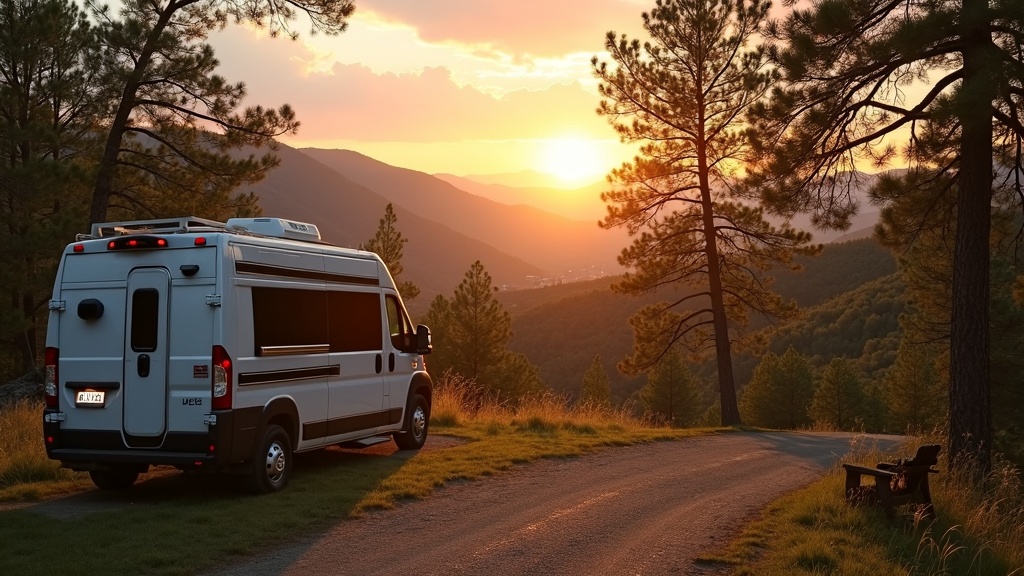
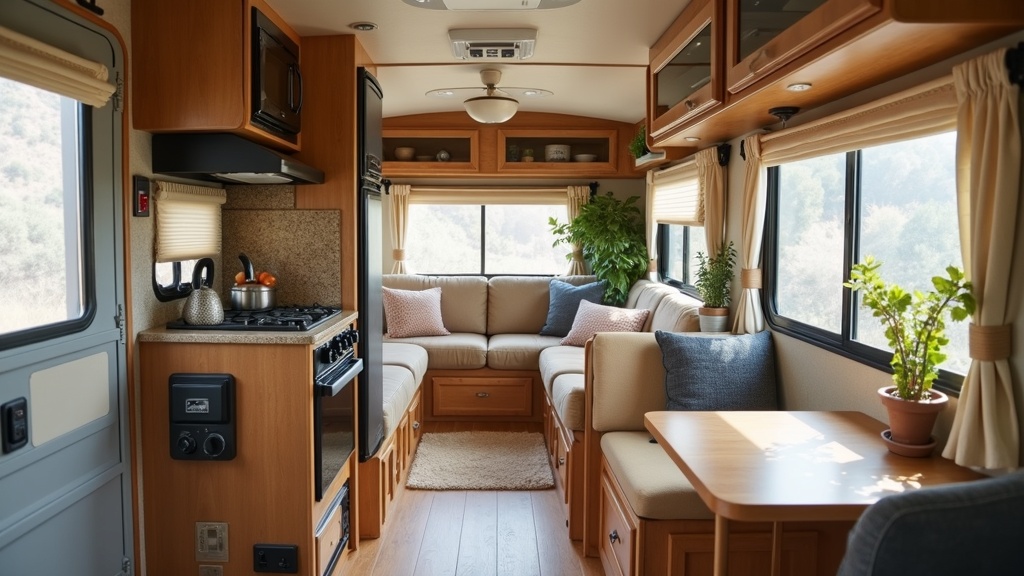
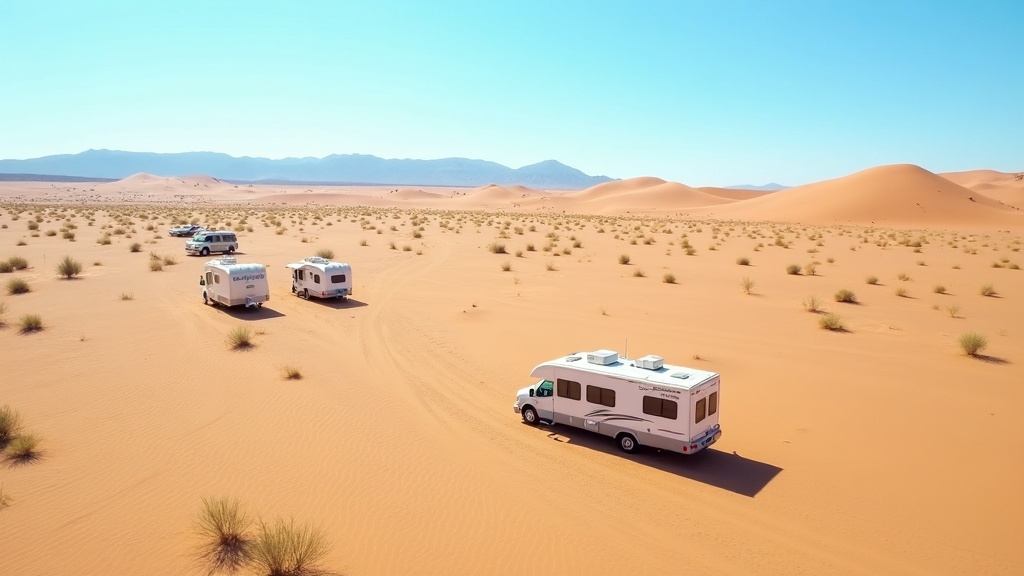

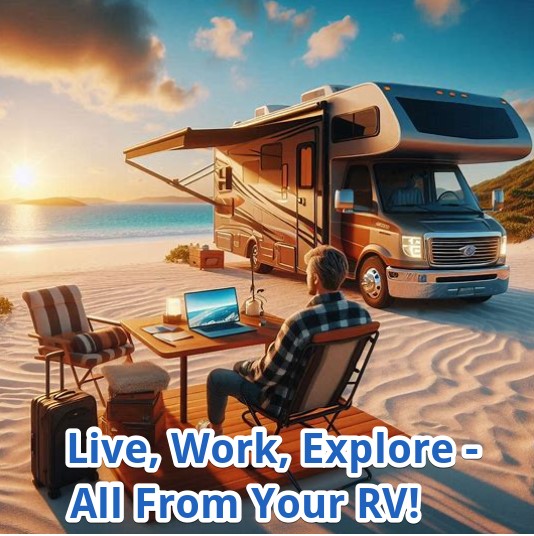
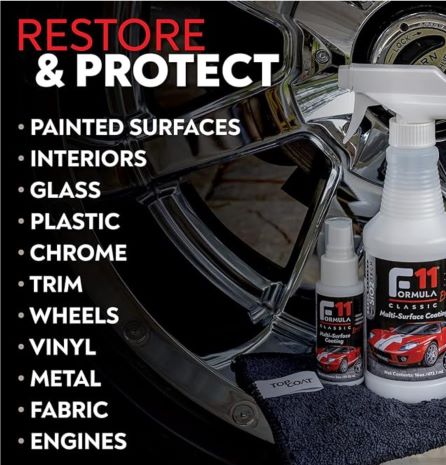
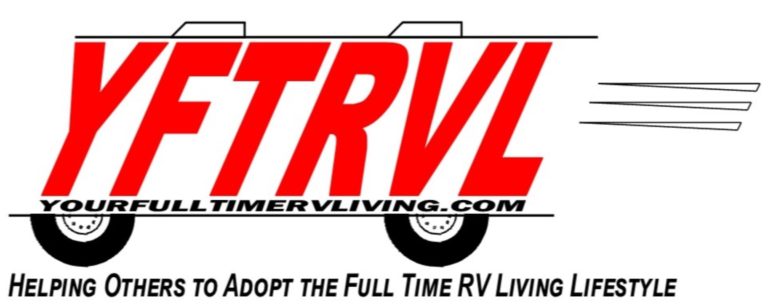



Recent Comments